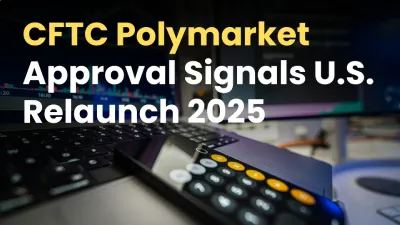简体中文
繁體中文
English
Pусский
日本語
ภาษาไทย
Tiếng Việt
Bahasa Indonesia
Español
हिन्दी
Filippiiniläinen
Français
Deutsch
Português
Türkçe
한국어
العربية
100% Tariff Incoming: Trump Announces November Hike on China
Abstract:The U.S. will impose an additional 100% tariff on Chinese imports starting Nov. 1, 2025—potentially earlier—alongside new export controls on “critical software,” escalating tensions after Beijing’s rare-earth curbs, new port fees, a Qualcomm probe, and a halt to U.S. soybean purchases. Stocks fell on the news. Key context: some U.S.-China tariffs remain paused until Nov. 10, a Supreme Court case could reshape Trump’s tariff authority, new U.S. duties on cabinets (Oct. 1) and wood products (Oct. 14) are in force, and a pause on Mexico tariffs is set to end next month.

Trump Announces 100% Tariff on Chinese Goods Starting Nov. 1, 2025
President Trump said Friday the U.S. will impose an additional 100% tariff on Chinese imports beginning November 1, 2025, escalating trade tensions with Beijing. In a post on Truth Social, he called Chinas recent trade stance “extraordinarily aggressive,” citing new export controls set to take effect next month that he said impact multiple countries and are a “moral disgrace.”
Trump added the tariff start date could be moved forward depending on China‘s response. He also said new U.S. export controls aimed at restricting China’s access to “critical software” will take effect on the same day in November.
Earlier Friday, Trump warned of a “massive increase” in duties and suggested he may cancel a planned meeting later this month with Chinese leader Xi Jinping.
What prompted the move
- The president pointed to several recent Chinese actions:
- Fresh curbs on exports of rare earth minerals
- New port fees on U.S. ships
- An antitrust probe into Qualcomm (QCOM)
- A halt to purchases of U.S. soybeans
- He described these steps as signs China has become “very hostile.”
Market reaction
- U.S. stocks fell Friday after the tariff threat, reflecting investor concern over renewed trade frictions.
- The broader tariff backdrop
- Some U.S. tariffs on Chinese goods—nearly 145% in certain categories—are paused until Nov. 10 as both sides work on a broader deal.
- Chinese tariffs on U.S. goods rose to 125% before the pause.
Whats next
Supreme Court test: Early next month, the U.S. Supreme Court will hear a case challenging Trump‘s “reciprocal” country-by-country tariffs. Lower courts have ruled against those duties; if the Supreme Court agrees, it could reshape Trump’s tariff strategy and the revenue tied to it.
New U.S. duties in October:
- Kitchen cabinets and vanities: effective Oct. 1
- Timber and certain wood products (including furniture): effective Oct. 14
Mexico pause ending: A U.S. pause on tariffs for Mexican goods is also set to expire early next month.
The administration is signaling a harder line on trade with China—backed by a 100% tariff and new export controls—while legal and diplomatic cross-currents (including a pending Supreme Court case and ongoing negotiations) could still shift the path ahead.

Disclaimer:
The views in this article only represent the author's personal views, and do not constitute investment advice on this platform. This platform does not guarantee the accuracy, completeness and timeliness of the information in the article, and will not be liable for any loss caused by the use of or reliance on the information in the article.
Read more

Singapore CFD Market 2025 Comes Back to Life After Decline
Singapore's leverage trading market 2025 rebounds as CFD and forex traders embrace AI adoption in trading Singapore.

KuCoin AUSTRAC Registration Strengthens Australian Crypto Futures
KuCoin AUSTRAC Registration and AFSL-backed Australian crypto futures, plus a new KuCoin Australia fiat on-ramp, mark a pivotal shift for local traders.

CFTC Polymarket Approval Signals U.S. Relaunch 2025
CFTC Polymarket approval clears path for Polymarket U.S. relaunch 2025, reshaping regulated prediction markets in the United States.

GCash Rolls Out Virtual US Account to Cut Forex Fees for Filipinos
GCash launches its Virtual US Account in the Philippines, cutting forex fees and empowering freelancers with higher take-home pay.
WikiFX Broker
Latest News
GCash Rolls Out Virtual US Account to Cut Forex Fees for Filipinos
The 350 Per Cent Promise That Cost Her RM604,000
INZO Commission Fees and Spreads Breakdown: A 2025 Data-Driven Analysis for Traders
Garanti BBVA Securities Exposed: Traders Report Unfair Charges & Poor Customer Service
"Just 9 More Lots": Inside the Endless Withdrawal Loop at Grand Capital
Private payroll losses accelerated in the past four weeks, ADP reports
Core wholesale prices rose less than expected in September; retail sales gain
Consumer confidence hits lowest point since April as job worries grow
CFTC Polymarket Approval Signals U.S. Relaunch 2025
MH Markets Commission Fees and Spreads Analysis: A Data-Driven Breakdown for Traders
Currency Calculator



